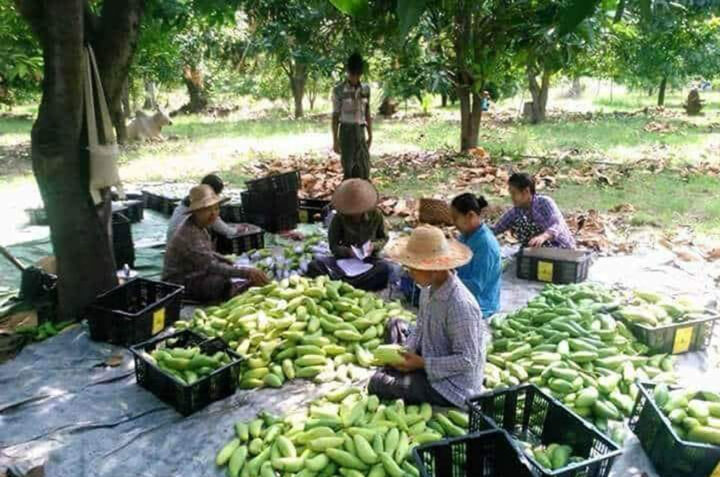January 12, 2021
Myanmar’s mango is expected to reach 80 per cent market share in China, along with high yield during the upcoming mango season, said U Kyaw Soe Naing, secretary of Myanmar Mango Market and Technology Development Association.
The blooming season has started. The growers are providing trees with nutrients, irrigation and insecticide. As the COVID-19 vaccine has now developed, the market is likely to rally 80 per cent in China in the mango season. Earlier, regional climate experts predict strong La Niña condition. At present, La Niña weakened. The flower season of mango tree has started in Myanmar. High yield is also expected, he continued.
The association advised the growers to use the same packaging for same size code in each region and state. This way, mango can fetch the fair price, and China cannot blame them for quality packaging. The association is raising awareness of input methods, packaging systems, export criteria and growing methods through the online platform during the meantime. The mango growers are also urged to supply the quality mango to maintain the market reputation.
Mango farm-owners need to follow Good Agricultural Practices (GAP). They also need to obtain GAP certification. The Agriculture Department has been instituting criteria for long-term organic farming, the association stated.
Of about 200 mango varieties originated in Myanmar, Seintalone, Shwehintha, Padamyar Ngamauk, Yinkwe, Machitsu varieties are primarily grown. The foreign market prefers Seintalone variety.
Typically, Myanmar’s mangoes are primarily shipped to China and sent to India, Bangladesh, Thailand, the Republic of Korea, Singapore, and Japan.
Ayeyawady Region possesses the most extensive mango plantation acres, having about 46,000 acres. Bago Region is the second-largest producer with 43,000 acres, and Mandalay has 29,000 acres of mango. According to the association, there are over 24,000 acres in Kayin State, over 20,400 acres in Shan State and over 20,000 acres in Sagaing Region. – Min Htet Aung (Translated by Ei Myat Mon)



